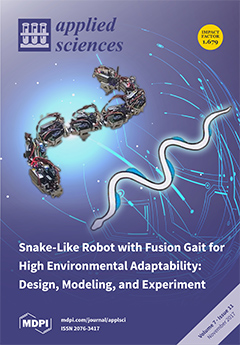Open AccessFeature PaperReview
State of the Art: Bipedal Robots for Lower Limb Rehabilitation
by
Xiong Yang 1,†, Haotian She 2,†, Haojian Lu 1, Toshio Fukuda 2 and Yajing Shen 1,3,*
1
Department of Mechanical and Biomedical Engineering, University of Hong Kong, Tat Chee Avenue, Kowloon, Hong Kong 999077, China
2
Beijing Institute of Technology, No.5 Yard, Zhong Guan Cun South Street, Haidian District, Beijing 100000, China
3
Centre for Robotics and Automation, CityU Shen Zhen Research Institute, Shen Zhen 518000, China
†
These authors contributed equally to this work.
Cited by 31 | Viewed by 12799
Abstract
The bipedal robot is one of the most attractive robots types given its similarity to the locomotion of human beings and its ability to assist people to walk during rehabilitation. This review summarizes the chronological historical development of bipedal robots and introduces some
[...] Read more.
The bipedal robot is one of the most attractive robots types given its similarity to the locomotion of human beings and its ability to assist people to walk during rehabilitation. This review summarizes the chronological historical development of bipedal robots and introduces some current popular bipedal robots age. Then, the basic theory-stability control and key technology-motion planning of bipedal robots are introduced and analyzed. Bipedal robots have a wide range of applications in the service, education, entertainment, and other industries. After that, we specifically discuss the applications of bipedal robots in lower limb rehabilitation, including wearable exoskeleton robots, rehabilitation equipment, soft exoskeleton robots, and unpowered exoskeleton robots, and their control methods. Lastly, the future development and the challenges in this field are discussed.
Full article
►▼
Show Figures





